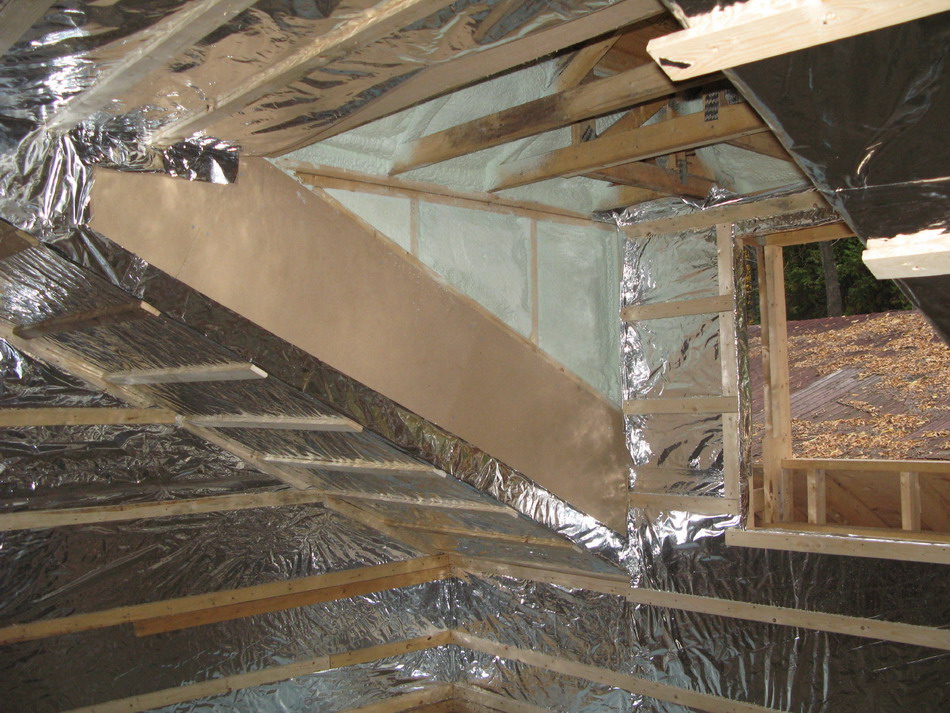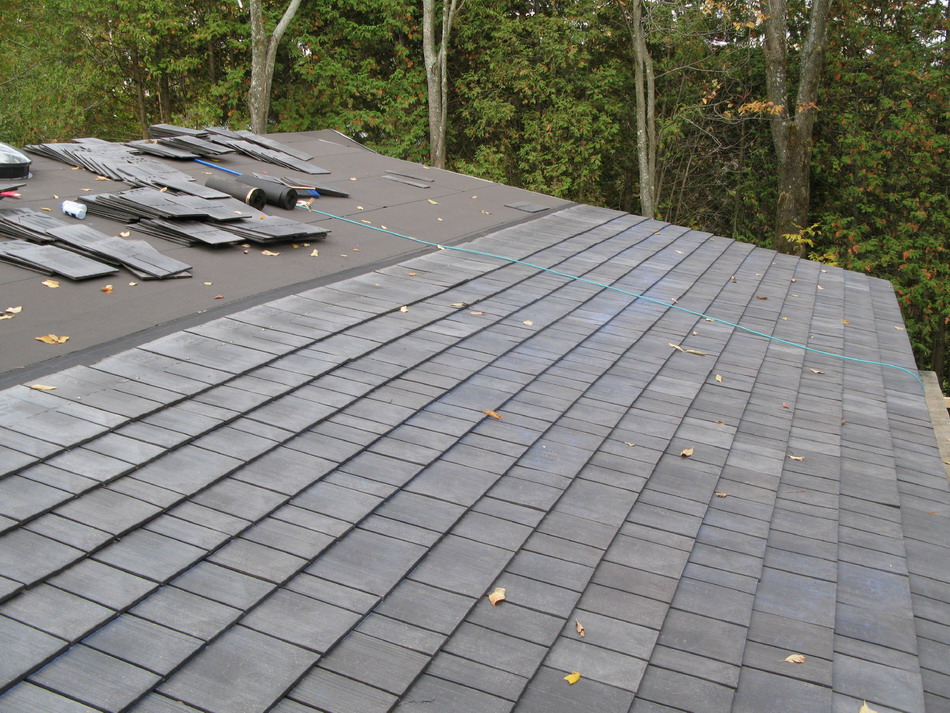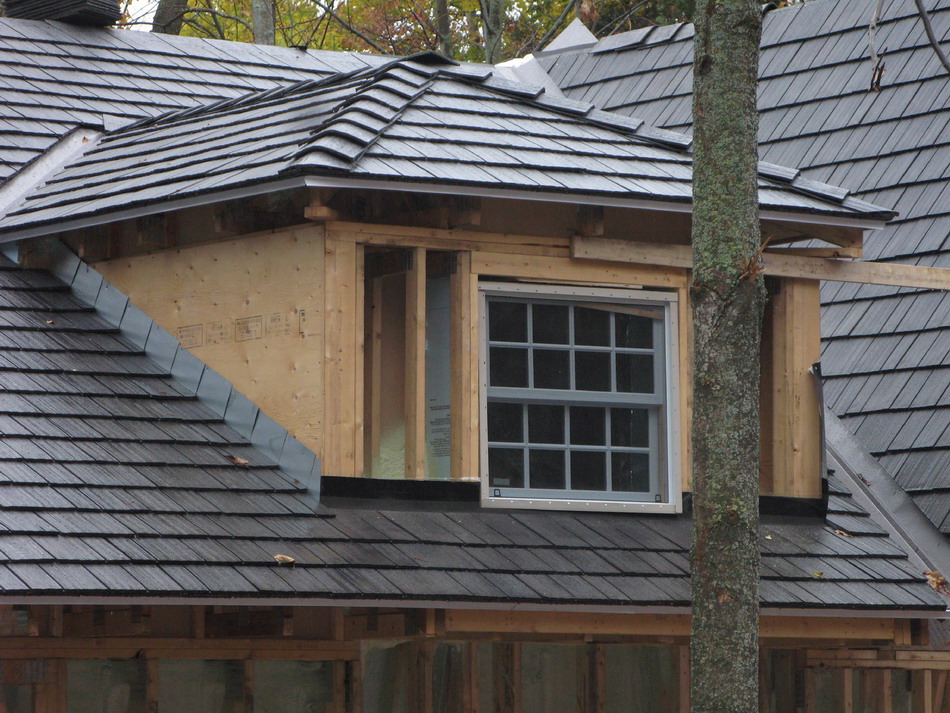The ceiling insulation consists of 22 inches of loose mineral wool that is sandwiched between tentest below (secured directly to both the underside of specific roof trusses as well as more commonly to 2×4 ceiling joists joining inside stud walls) and a breathable fabric above. Above this membrane is a minimum 12 inch ventilation space open to the outside under the eaves. The tentest, like the walls, is covered by reflective foil then strapping and finally drywall. Certain spaces were sprayed by 5.5 inches of polyurethane foam (dormer window cheeks, and the outside edges of the dormer roof where it meets the dormer walls). The ceiling has a U-value of 0.0126.

Soya-based polyurethane foam on dormer cheek walls and underside of dormer roof
The roof was covered by ¾ “ D-grade plywood, then high quality roofing membrane followed by alternating layers of roofing paper and Enviroshake shingles.

Enviroshakes in the process of being laid down on shed dormer roof.
Enviroshakes are a Canadian product maufactured in Chatham, Ontario, made up of injection-molded shingles composed of a rubber-resin-cellulosic fibre compound, the rubber being derived from recycled tires. Each standard Enviroshake has dimensions of 12 x 16 inches; and in thickness they commence at 5/8 inch and taper to ¼ inch. They come in 6 patterns, which when randomly arranged, very effectively takes on the appearance of a cedar shingle roof. They are guaranteed for 50 years and accelerated age testing has suggested that they will not warp or split or lose their impermeability during this time period. Fresh from the factory they are a dark grey, however they quickly weather to a lighter brown-grey colour, strongly reminiscent of weathered cedar shingles. They have good snow shedding capability and can be walked on without fear of damage. Major benefits include increased durability, UV protection, wind and hail resistance combined with superior mould, mildew and insect resistant properties, compared to cedar or asphalt shingles. There is little waste during installation and what waste exists can be recycled.

View of dormer and roof clad in Enviroshakes. Grey colour will turn light grey brown.
Their disadvantage is their cost (although it is comparable to a good steel roof), and the fact that they are a Class C roof, that does not offer the same fire protection from external sources, as would slate, ceramic tile or metal.
Their environmental advantage is their extreme long life, and the fact that 95% of their makeup is derived from recycled materials, materials that would otherwise accumulate an non-biodegradable landfill.
